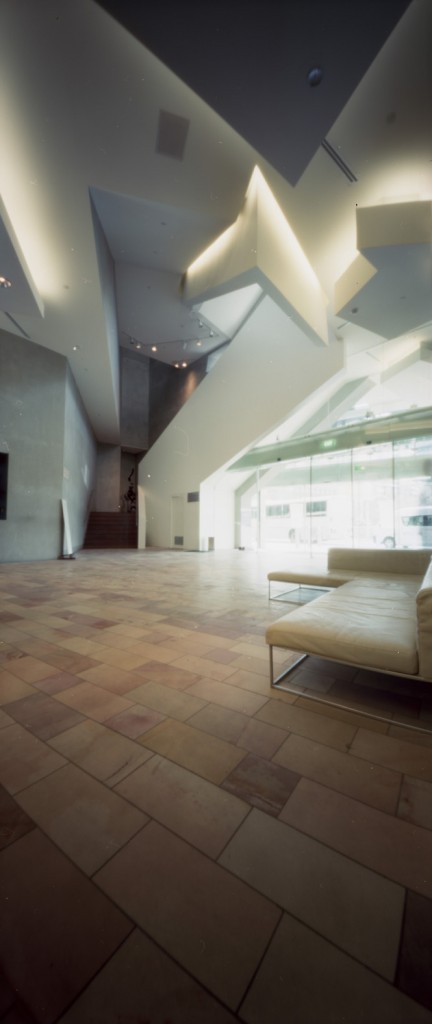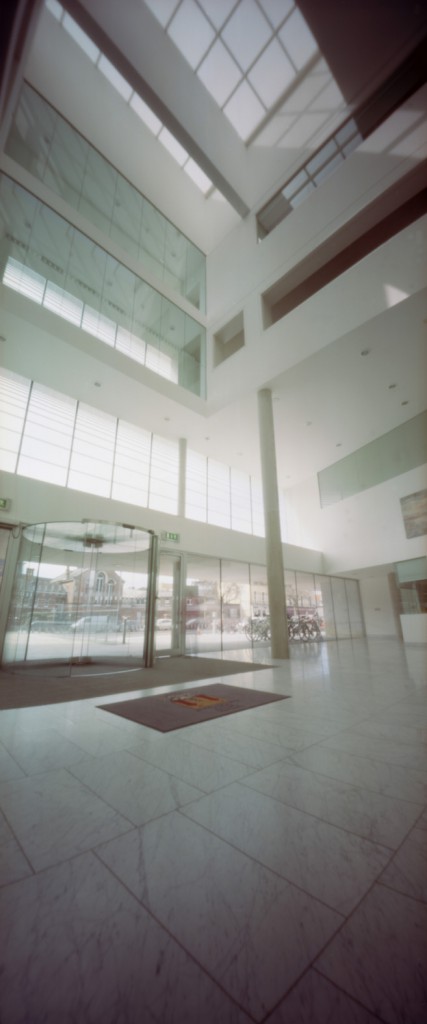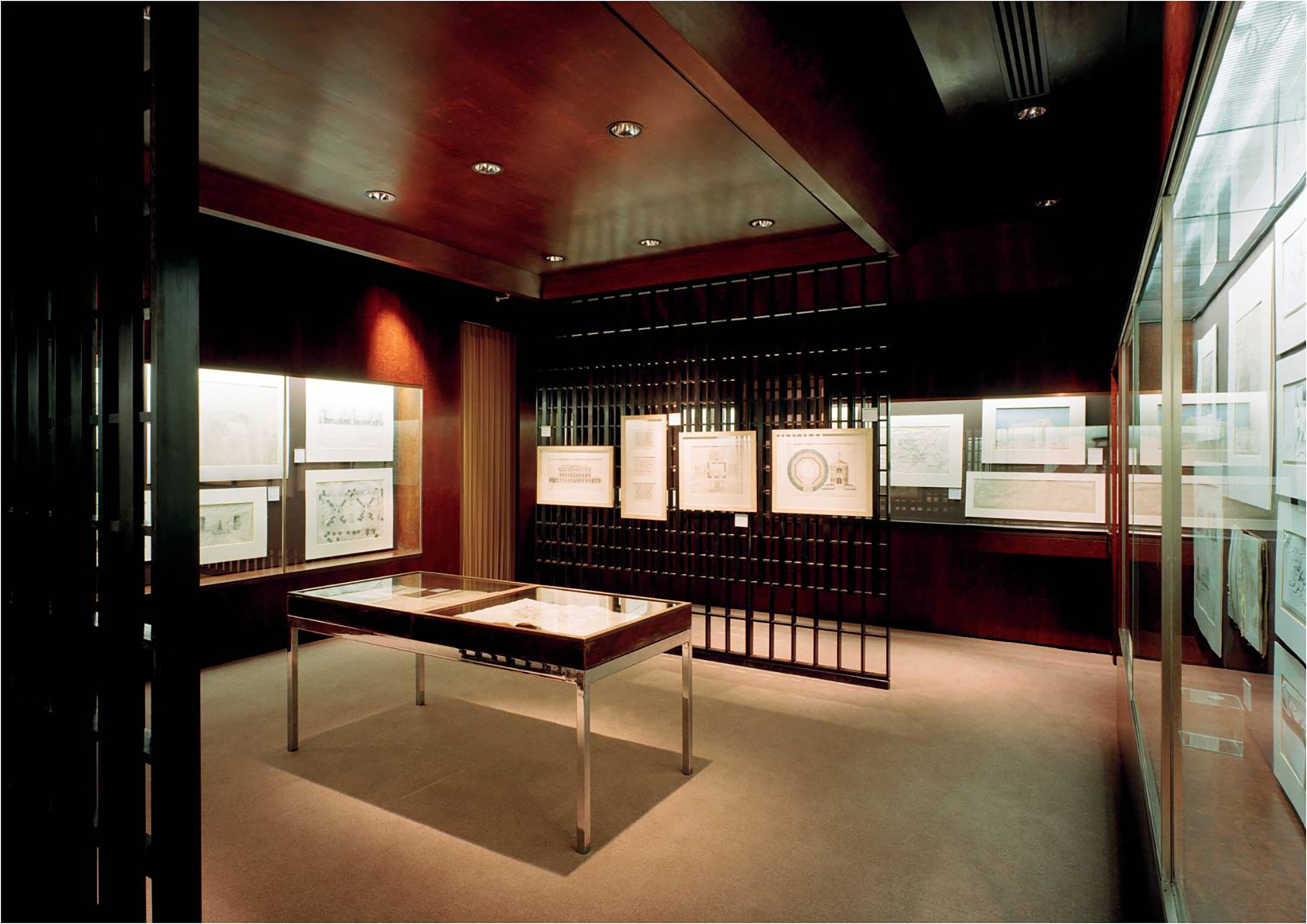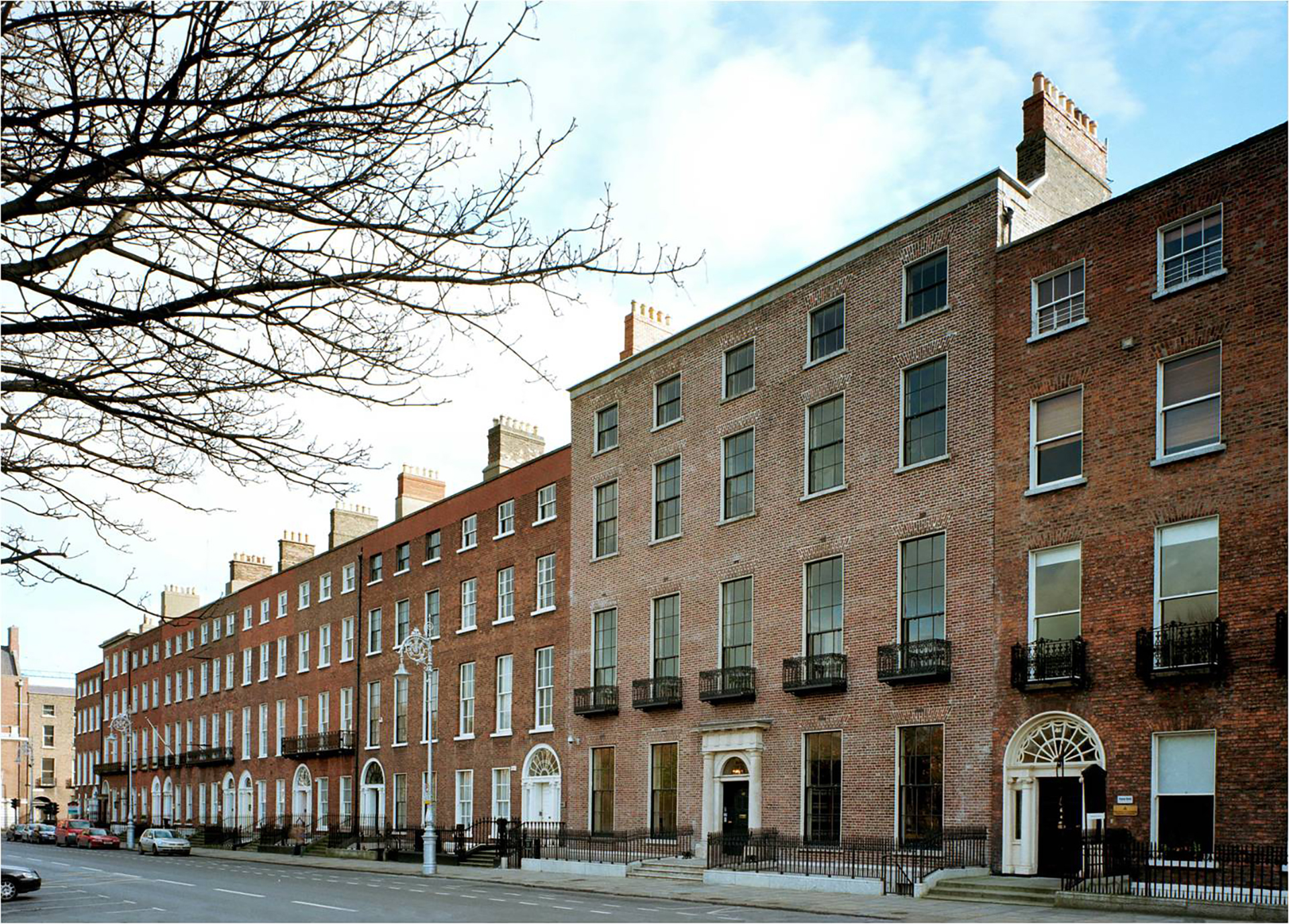Pinhole photographs by Harry Moore
According to artist Harry Moore, an atrium is like the chambers of the heart, a meeting place that facilitates circulation to a wider premises. Traditionally the design of these high multi-storey chambers offers their architects opportunities to play with structure, incorporating light and shape without the burden of functional occupation. The air in these open spaces can be imbued with a sense of cathedral like reverence, free from emotional gravity.

As an artist, Harry Moore engages with the atrium as a space that alludes to the wide-angle pinhole frame. This body of work in this exhibition reflects on such encounters in two locations, Melbourne and Cork.
In the words of architect Andrew Lane:
Atria offer the architect an opportunity to choreograph moments of drama: a pause, a mental transition. Derived from the ancient Roman domus, and before that the Etruscan atrium house, and the Greek Peristyle house, the atrium is positioned beyond the vestibule, or entrance space, and was the most important part of the house, being the space where guests and clients were greeted.
The atrium continues to be a centrally important moment within a building. The architect can use this space to direct the eye, define public and private space, and often compliment a principal circulation route. On entering an atrium one can be the viewed, the viewer, or in most cases both. The atrium provides an opportunity to create an architectural promenade – to see and be seen. The onlooker is often secreted in a niche or alcove – a spectator of the promenade. Upon arrival, one is on show – has entered the stage.
Lighting requires careful consideration as in most cases contemporary atria differ from the traditional domestic models, being covered by a roof. Some atria use natural “top” lighting to further increase the sense of height and wonder, while others carefully control and restrict natural light, enabling a sense of curiosity – to look further. In addition to light, sound plays an important role. Sometimes reverberant, evoking memories of swimming pools, or absorbent like library or auditorium spaces, setting a scene of contemplation or study.
Atria both physically and spiritually create a heightened sense of space and place. I often wonder if the contemporary atrium has become, for the many that no longer follow a religion, a surrogate Cathedral experience. Not always strictly necessary, the atrium without doubt provides spatial delight and is worthwhile defending when the architect’s client decides to rationalise (cheapen) the project.
At first glance contemporary dwellings have moved away from the atrium tradition. But look closer and you may well find a double-height space. Le Corbusier experimented with this form of space in an early domestic project, Maison la Roche, and perfected the modern equivalent of the Domus model with Villa Savoye – a tour de force of the architectural promenade.
The Roman architect, Vitruvius in his treaty on architecture, De Architectura, asserted that there were three principles of good architecture: Firmatis (Durability), Utiltas(Utility/Function), and Venustatis (Beauty/Delight). So many buildings achieve the first two points but few offer delight. Although atria are often planned with a particular function or pre-determined aspiration by the client, the atrium space transcends an easily defined functional space, and enables a visitor the opportunity to gaze with wonderment, to be playful, or perhaps to pause and reflect. In other words: an atrium is a delightful space.

Locations
National Gallery of Victoria & Ian Potter Centre, Federation Square, Melbourne.
Lab Architecture Studio, directed by Donald Bates and Peter Davidson
Cork County Hall extension, Cleary Doyle Contracting Limited led by ABK Architects.
UCC Students Centre, Reddy Architecture + Urbanism



